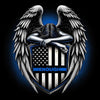What do the firefighter and correctional flags stand for?
At Police Brand, we commemorate fallen law enforcement officers while also symbolizing the relationship between law enforcement and the community as guardians against criminal elements, is one of Police Brand's most popular wood flags. If you've been a customer for a long time, you're probably aware that it's one of our most popular wood flags. What you may not be aware of is that the Thin Blue Line symbol was also the inspiration for the "Thin Red Line," which alludes to the firefighter's protective line. As a result, what does this imply for firefighters?
At its most basic level, the Thin Red Line is a sign used by fire departments to demonstrate their appreciation for firefighters who have been injured or died while performing their duties.
With the Thin Red Line Flag from Police Brand, you can combine the conspicuous red stripe of the Thin Red Line insignia with a black-and-white rendition of the American flag to create a visually striking and meaningful combination.
After a Russian horse attack at Balaclava was repulsed by the British Sutherland Highlanders 93rd Regiment, with the assistance of a small force of Royal Marines and a few Turkish infantrymen, the phrase "thin red line" was coined during the Crimean War.
The Russian artillery and infantry launched an attack on the Ottoman fortifications that served as Balaclava's first line of defense, which marked the beginning of the war. After initially repelling the Russian attacks, the Ottoman soldiers were forced to retire as a result of a lack of assistance. In response to their capture, the Russian cavalry advanced to the second defensive line, which was being held by the Ottomans and the 93rd Highland Regiment. The primary role of this line was to hold and repel the attacking force. And they certainly did.
On that day, the 93rd Regiment was given the nickname "The Fighting Highlanders," and the distinction of being the first unit to cross the "Thin Red Line" was bestowed upon them. Because of this remarkable achievement, the Allies (France, the United Kingdom, the Ottoman Empire, and Sardinia) were able to destroy a significant section of the Russian cavalry advance, putting them on the defensive.
"The Thin Red Line," according to W. H. Russell, a bystander and press writer for The Times, stood between the Russian cavalry and the defenseless British base. Russell's description of the "thin red streak tipped with a line of steel of the 93rd" was immediately paraphrased and became part of popular culture.
Since that fateful day in October of 1854, the term "thin red line" has become a popular figure of speech to describe any thinly distributed military force that is able to maintain its ground in the face of an onslaught. The Thin Red Line, by Robert Gibb, is a renowned picture from 1881 that provides a vivid depiction of what this looked like in real life.
A mark of respect for firefighters who have been injured or died while performing their duties, the name "Thin Red Line" is now often used by fire departments. When firemen are in danger, they put their own lives second to the safety of people they are protecting. They are compelled to confront their own anxieties and muster every ounce of bravery they possess in order to complete the essential job. The phrase "The Thin Red Line of Courage" refers to the last ounce of courage that firemen can muster from deep within their hearts in order to overcome their deepest fears in order to rescue and preserve lives and property.
The Thin Red Line Flag holds a great deal of significance for firemen, their friends, and family members. One that we only know about because hundreds of years of blood, sweat, and tears have gone into uncovering it.
An examination of what the Thin Silver Line represents
Those condemned to time in a correctional institution or other detention facility are under the supervision of Correctional Officers, who also aid in the rehabilitation process of those sentenced to time in a correctional institution or other places of imprisonment. They are responsible for the well-being and safety of convicts, as well as for keeping a peaceful, safe, and pleasant environment in the prison or detention facility.
Besides performing responsibilities that require them to have direct contact with convicts, Corrections Officers are also responsible for overseeing some administrative elements of the correctional institution where they operate. They collaborate closely with Police Departments and other law enforcement agencies in the processing of paperwork and the transportation of convicts to other facilities.
The Thin Silver Line honors the men and women who, through their job as correctional officers, defend our country and its citizens. Correction officers around the country put in long hours every day to ensure the safety of our communities and the rehabilitation of those who have been imprisoned. It is a thankless profession, but one that is essential to our nation's well-being. The Thin Silver Line will always be as powerful and unified as the country it protects, and that will never change.
Workers in prisons are symbolized by the Thin Gray Line (sometimes known as the "Thin Gray Line") (also known as the Silver Line). To symbolize the hue of handcuffs and/or jailhouse bars, gray was chosen as the color to be used in the design. Prison guards, bailiffs, and parole officials, among others, are all considered to be agents of the Thin Gray Line in the context of the justice system. One of the more recent Thin Line styles, this one has quickly acquired popularity among those who fall within the demographic represented by the style.
Final thoughts
Thin Blue Line flags and other flag merchandises are easily available online at Police Brand. Numerous products are protected by trademarks or other means, despite widespread copying. Flags and emblems have been a part of families, trades, military, and nations since before recorded history. Other emergency workers have selected colors and symbols that are comparable.
The Maltese cross used in firefighting and the star of life used in EMS are also examples. The badge and outfit are mandatory for police officers, but the thin blue line insignia are a more recent addition that can be shared by any person who appreciates the delicate line between peace and turmoil.




